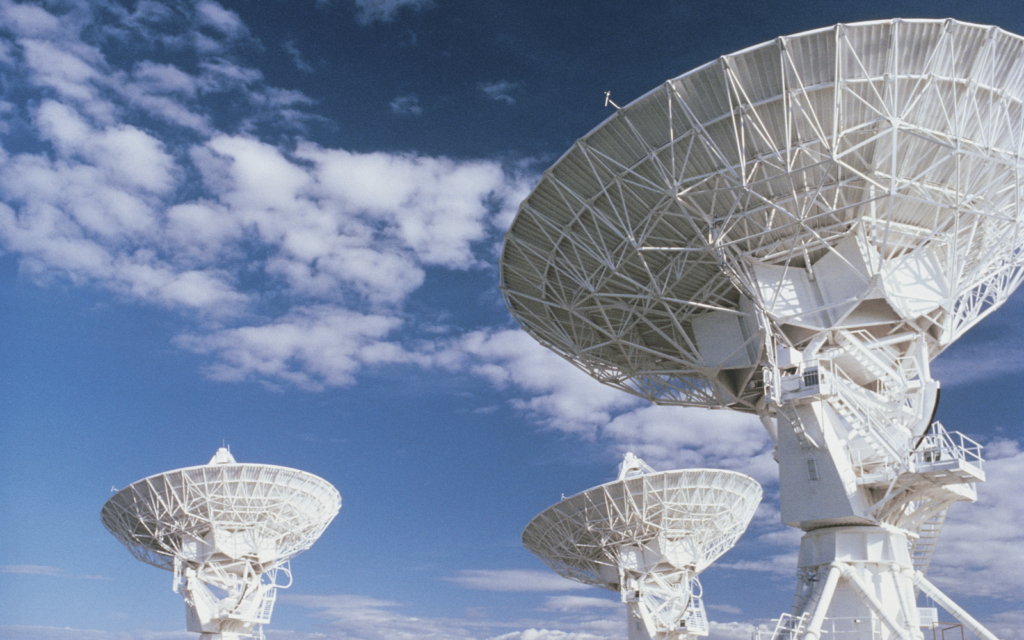MeerKAT, if you’ve been paying attention, is South Africa’s newest radio telescope array. Part of the ongoing Square Kilometre Array (SKA) project, this bit is up and running earlier than its counterparts. As such, it’s already out there, doing science.
MeerKAT’s most recent feat is combining multiple observational instruments into one. It’s done this before, of course. And the whole point of the SKA project is to do it much more often. It’ll eventually link with its Australian partner to monitor the skies more effectively. It’s already doing this, though, by combining 64 radio telescope dishes into a single unit.
MeerKAT habitat
SA’s radio telescope setup has combined the power of 64 dishes to better observe the patterns of neutral hydrogen in the universe. This is a huge project, involving the search for dark matter and a better understanding of gravity. We may know it makes things fall down, but we don’t really know how. Yet.
But the Karoo-based MeerKAT isn’t being that technical at the moment. It’s on its way, according to a scientific paper detailing its single-instrument functions (and a bunch of stuff we’re not qualified to understand). The paper’s lead, Steven Cunnington, explains that MeerKAT, and the whole Square Kilometre Array Observatory (SKAO) will eventually operate as one giant interferometer. This gives the option for massive detail on a single target.
Read More: SA’s MeerKAT radio telescope reveals a gigantic 6.5 million light-year long shockwave
“However, the interferometer will not be sensitive enough to the largest scales most interesting for cosmologists studying the universe. Therefore, we instead use the array as a collection of 64 individual telescopes which allows them to map the giant volumes of sky required for cosmology.”
In MeerKAT’s single-instrument configuration, the facility has confirmed a shared pattern of galaxies previously sighted by the Anglo-Australian Telescope. This is an optical instrument, very different from the radio telescope setup matching its data.
“This detection was made with just a small amount of pilot survey data. It’s encouraging to imagine what will be achieved as MeerKAT continues to make increasingly larger observations,” said Cunningham.
Source: Phys.org
